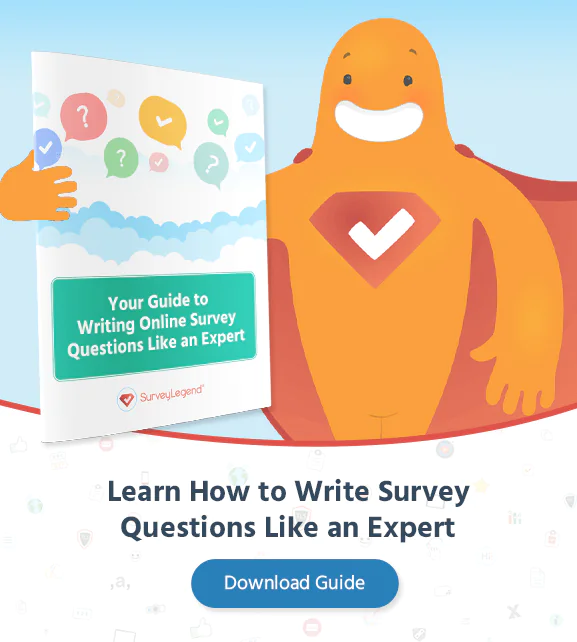

Surveys used in research, market analysis, and public opinion polling are a valuable tool for gathering data and insights. However, because you’re collecting people’s personal data and opinions, there are a number of ethical considerations. By conducting surveys ethically, researchers can help ensure the integrity, reliability, and fairness of the collected information.
To ensure ethical practices in survey research, institutions often have ethical review boards or committees responsible for evaluating research proposals. These bodies assess the ethical implications of the survey, including participant protection, informed consent, privacy measures, and potential risks. Researchers should seek ethical review and approval before conducting surveys involving human participants, demonstrating their commitment to upholding ethical standards. One way to gauge whether your survey is ethical is by reviewing codes set by the American Association of Public Opinion Research (AAPOR).
To address ethical considerations in survey research, the American Association of Public Opinion Research (AAPOR) was formed. Composed of more than 2,000 public opinion and survey research professionals in the United States, with many others residing internationally, this professional organization calls for honesty, respect, and integrity in dealing with respondents, clients, and the public. Throughout this blog, we will reference AAPOR standards in relation to survey ethics.
Whether dictated by the AAPOR or just practicing ethical surveying, here are ten considerations for researchers conducting surveys and wanting to go about it the right way.
According to the AAPOR code of ethics, survey participants should be informed on the content, sponsorship, and purpose of the survey so that they can make an informed judgment about whether they wish to be involved in the study. So, consider beginning your survey with an introduction that explains the purpose of the survey and all other details, such as confidentiality, incentives, and more. You might also include who the survey benefits (e.g., is it marketing research for a company, a customer satisfaction survey, an academic study, and so on).
SurveyLegend allows surveyors to easily create welcome pages, or introduction pages, where they can explain the purpose of the survey and any other details, along with including their log for legitimacy. For a research ethics statement example, read more about the 10 Benefits of Survey Welcome Pages .
Safeguarding participants’ privacy and protecting their data is of utmost importance in survey research. Survey designers must adhere to applicable data protection laws and regulations, ensuring that respondents’ personal information is securely collected, stored, and used only for the specified purposes. Implementing measures such as encryption, restricted access, and secure storage can help protect participants’ data from unauthorized access or breaches. Researchers should clearly communicate the privacy measures taken and provide contact information for queries or concerns related to data privacy.
Ethical concerns arise if participants feel “unduly pressured, cajoled, or coerced” into taking part in a survey. While this is uncommon, it has been known to occur. For example, an employee survey in which the employer threatens to deduct pay for not participating. The AAPOR writes that survey introductions should always state that participation is 100% voluntary, and that a participant who chooses to take a survey can opt out at any time without repercussions.
Researchers need to provide a safe space for respondents to express their opinions honestly without fear of repercussions or judgment. If a surveyor promises anonymity or confidentiality, they must make good on that. It’s also important that a researcher explains the difference between the two. Anonymity ensures that respondents’ identities are unknown to everyone, while confidentiality guarantees that the collected data is secure but accessible to some (typically a third-party conducting the survey, not the organization that commissioned the survey, which allows for follow-up). Read more about anonymous vs confidential surveys here.
Of course, sometimes data exposure occurs. The AAPOR writes, “While a researcher may have the best of intentions, if they fail to correctly segregate personally identifiable information from survey answers, or worse still, store that information in a way that leaves it accessible to prying eyes, they have acted unethically.” So, it’s important to safeguard data and use encryption techniques. Read more about Anonymous vs. Confidential Surveys .
Researchers generally want accurate and honest responses in surveys. To get these, they must design surveys that encourage respondents to provide truthful information to the best of their knowledge and ability. This means that survey questions should be clear, unambiguous, and avoid leading or biased language that may influence respondents’ answers. Additionally, providing respondents with clear instructions and assuring them of the importance of honest responses can promote truthful participation.
If the topic of a survey is sensitive, it’s important that the researcher takes care to avoid question wording that may offend or humiliate participants (aside from distressing participants, this can cause this to drop out which will skew survey results). Surveyors should always consider who they are surveying, and take special care when addressing minors (those under 18) and people who are vulnerable (minorities, the disabled, and so on). Read more about Asking Sensitive Survey Questions .
Researchers use incentives as a way to encourage participation. However, it’s important to let participants know how they will receive their reward. This means stating any qualifying or disqualifying factors. This also includes explaining how and when the reward will be delivered, whether it’s a gift in the mail or a promo code sent via email. Read more about the 10 Pros and Cons of Offering Survey Incentives .
The AAPOR is pretty clear on this: “Researchers must guard against bias in survey flow and wording to avoid skewing data.” To get unbiased and reliable data, you should craft survey questions without leading respondents towards a particular answer. Leading questions using phrasing in a way that predisposes respondents to answer in a specific manner. These can cause survey ethics issues.
Survey designers should use neutral language, avoid loaded terms, and maintain a balanced tone throughout the questionnaire. Pre-testing the survey with a diverse group of individuals can help identify and rectify any leading questions or potential biases. Read more about Different Types of Survey Bias and How to Avoid Them .
Obtaining informed consent from survey participants is a fundamental ethical requirement. Informed consent ensures that respondents are aware of the purpose of the survey, how their data will be used, and any potential risks or benefits associated with participation. Researchers should provide clear information about the survey’s goals, procedures, anonymity measures, and how the data will be handled.
Informed consent can be obtained through consent forms or an introductory section of the survey. This is designed to allow participants to make an informed decision about their participation. Obtaining informed consent isn’t necessary, however, on very general surveys or quick polls where participants aren’t divulging any compromising data.
The AAPOR says “Survey results should always be published with a statement disclosing any interest by sponsors funding the research, so that the results can be understood in context. For example if a survey into the effects of a certain mattress technology on sleep quality was sponsored by a mattress manufacturer, this should be clearly disclosed wherever the results are published.”
To communicate results, survey conductors need to document and publish the methodology used in their research. This includes the sample selection process, sample size, data processing techniques, and so on. Explanations of the limitations of the survey methods and disclosure of any uncertainties in conclusions should be included. If an error is spotted, it should quickly be fixed and new results should be published with an explanation.
Lastly, survey makers should be ready to disclose on demand. They should be willing to report who sponsored and conducted the survey, as well as the exact wording and sequencing of questions, description of the population, sample sizes and how a sample was selected, and so on.
Ethics in survey research play a pivotal role in safeguarding participant rights, ensuring data integrity, and maintaining public trust. Respecting anonymity, promoting truthful statements, avoiding leading questions, obtaining informed consent, protecting privacy, and maintaining data security are essential considerations.
By incorporating these ethical principles, researchers can gather reliable data, generate valuable insights, and contribute to the advancement of knowledge while prioritizing the well-being and rights of survey takers.
Ready to start, or just want to create an ethics survey? SurveyLegend is your free online survey tool and we take survey ethics seriously! Our beautiful surveys can easily follow AAPOR standards, offering the highest level of data security and encryption. You can also choose whether to keep respondents’ answers anonymous or confidential. And, when it comes to sharing results, our robust analytics made it easy. Give us a try today!
Do you consider survey ethics when creating a questionnaire? Does the AAPOR provide insight? Let us know in the comments!
Survey ethics assess the ethical implications of a survey, including participant protection, informed consent, privacy measures, potential risks, and so on.
What is the AAPOR?The AAPOR is the American Association of Public Opinion Research. This professional organization calls for honesty, respect, and integrity in dealing with respondents, clients, and the public.
What are ethical considerations for surveys?Surveys collect a lot of personal data. Ethical considerations revolve around how this data will be protected, shared, analyzed, and so on.
About the AuthorA born entrepreneur, passionate leader, motivator, great love for UI & UX design, and strong believer in "less is more”. A big advocate of bootstrapping. BS in Logistics Service Management. I don't create company environments, I create family and team environments.


Ads are inescapable today. They’re on your television, on the radio, on the road, and popping up on your computer or phone. But how effective are they? Is the.

Taking a shortcut is all about finding more efficient or faster ways of doing something without sacrificing quality or integrity. On the other hand, cutting corners means skipping steps.

We talk a lot about the different types of survey bias at SurveyLegend. From non-response bias to confirmation bias, introducing any type of bias into your survey can render.